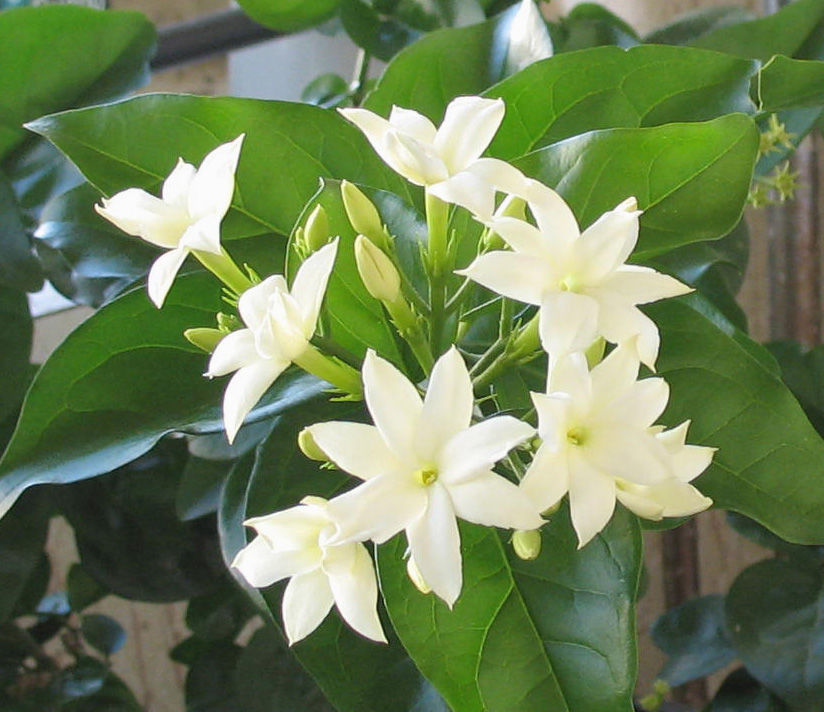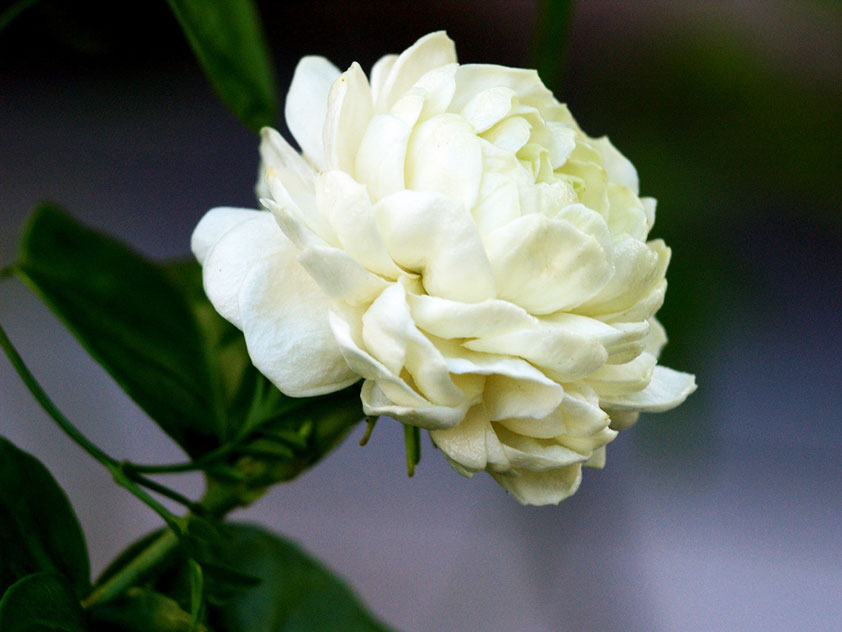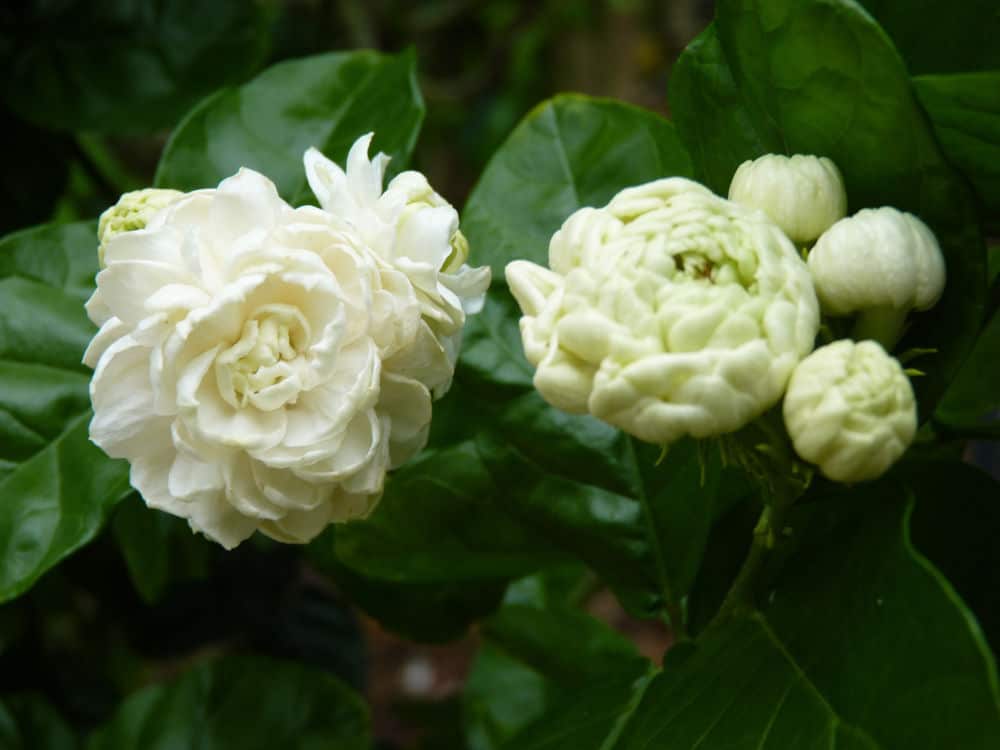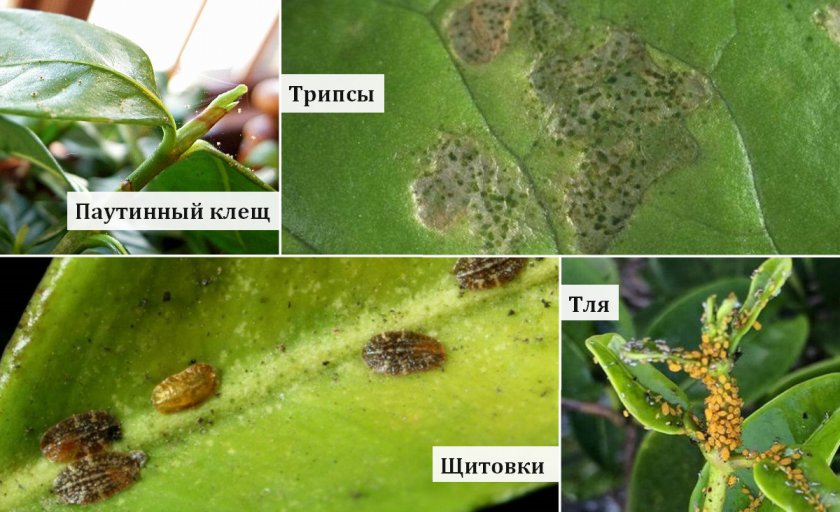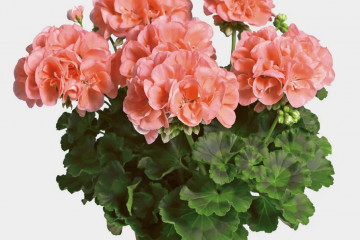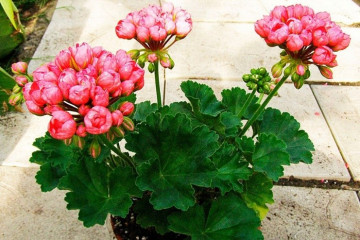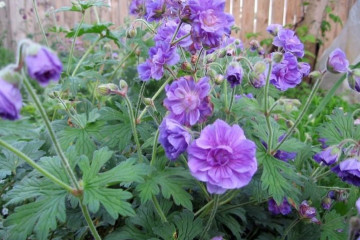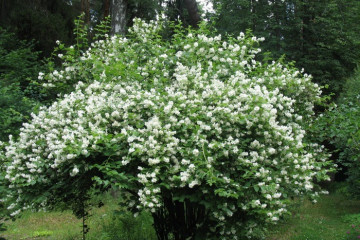Jasmine Sambac - popular varieties, how to care
Content:
Among indoor plants, Sambac jasmine, or Indian jasmine, is especially popular. The decorative culture attracts not only with its snow-white flowers, but also with its aroma. In order for the plant to be healthy and bloom profusely, you need to know the rules for caring for it at home.
Jasmine Sambac - what kind of flower is it, what family does it belong to?
There is a debate among botanists about the homeland of jasmine. Some believe that the flower is a native of Iran, others call India its homeland. There are mentions that the plant was grown by order of the Egyptian, Persian kings and their wives. In ancient Egyptian literature, you can find descriptions of various varieties of jasmine.
Jasmine Sambac is an evergreen shrub, often climbing, of the Olive family, which reaches a height of 2 m. The shoots are long and thin, resembling vines. They are brown in color, which makes them look like tree branches, abundantly leafy.
The leaves are smooth, green in color, reaching a length of 10 cm. They are located opposite each other and have an ovoid shape. The flowers resemble an elongated tube; they bloom at the tips of branches in groups of up to 10 pieces. At the edge of the peduncle, a calyx appears (this is the flower), reaching a diameter of 1 cm. Depending on the type and variety of the plant, the color of the flowers can be different: pure white, yellow or red.
Varieties of indoor plants with names, what they look like
In nature, there are more than 250 varieties of jasmine, which differ from each other in characteristic features.
The most common home-grown varieties are:
- Jasmine varieties Arabian Knights. Its main feature is a double flower, reaching a diameter of 2 cm. The evergreen shrub has the ability to grow rapidly. Flowering lasts from early March to October. Arabian Jasmine is intended for balcony and outdoor cultivation. It tolerates sunny places and partial shade well.
- Jasmine varieties Beauty of India. A very common variety bred by Indian breeders. Suitable for both indoor and outdoor cultivation. Its liana reaches a height of 3 m. With proper care, flowering lasts almost all year round. To get more inflorescences, perennials must be pruned. The flowers are pure white in color, in the long tube there is a duet of stamens with bright yellow anthers.
- Jasmine varieties of the Maid of Orleans. The variety is distinguished by its fast growth rate and unpretentiousness. To achieve abundant flowering and the correct shape, the bush must be cut off. Flowers stay on the plant for no more than one day, then they fall off, and new ones form next to them. The cross section of the flower is 1.5 cm.
- Grand Duke of Tuscany. The variety grows rather slowly compared to other varieties, but differs in 5 cm double inflorescences. Its flowers have a double row of petals, resembling the shape of a rose. Jasmine feels good in partial shade.
- Mali Chat. A rather slow growing climbing liana. A distinctive feature of the variety is a strong smell, but the flowers are small - only 2 cm. Flowering is observed all year round.The plant can grow on the sunny side and in partial shade.
Home care for Jasmine Sambac
Jasmine will grow and bloom beautifully if you follow the necessary care rules:
- Illumination and temperature conditions. The bush needs warm, but humidified air. The optimum temperature is 20 degrees Celsius. In winter, the flower should be provided with additional artificial lighting. It is worth protecting the plant from direct sunlight to avoid burns on the leaves.
- Watering rules and humidity. Watering is carried out as the soil dries up. In summer - 2-3 times a week. In winter, watering is reduced to 1 time per week. Do not overmoisten the soil, otherwise the plant may throw off the foliage. To maintain humidity, the bush is sprayed with water at room temperature.
- Top dressing and soil quality. Fertilizers for jasmine are applied monthly. To do this, use liquid top dressing containing potassium. The nutrient solution is poured under the root or sprayed over the leaves. In winter, the plant does not need feeding. The soil for planting is prepared from peat sand and humus, since it should be loose and light.
- Flower container size. When replanting jasmine, the new pot should be 2-3 cm larger in diameter than the previous one.
- Pruning and replanting. The plant is transplanted in the spring. For young bushes, this must be done annually, in the future, the flower requires a transplant every 2-3 years, as the pot is filled with the root system. The formation of the jasmine crown is carried out in the summer, in winter such procedures are not performed, since the growth of the bush slows down.
Features of flowering plants
Jasmine Sambac differs from other indoor plants for its abundant flowering in winter. Some varieties can bloom all year round. In order for the peduncles to form large and lush, in the summer you should not forget to feed the soil with minerals.
In winter, the activity of the plant practically stops, the air temperature is lowered to + 15 ... +16 degrees. During the dormant period, with the help of artificial lighting, the flower day is extended.
The jasmine shrub can have different flower shapes:
- correct (one row of petals);
- terry (more than two rows of petals);
- semi-double (two rows).
Each peduncle is presented in the form of an elongated tube, on the edge of which corollas bloom, consisting of one or more rows of petals. After the ovary ripens, a berry appears in its place.
Sambac jasmine propagation procedure by cuttings
Jasmine is cultivated at home using cuttings. This is done in early May and throughout the summer. Procedure:
- Lignified cuttings are cut so that each has 2-3 internodes. You can not cut off planting blanks from flowering shoots.
- After cutting, the cuttings are placed in a solution that stimulates root development.
- When the first roots appear, the new seedlings are placed in a container filled with wet sand.
- From above it is covered with a bag to create a greenhouse effect, but regularly ventilated.
- After 1.5-2 months after rooting, the shoots are seated in separate pots.
Growing problems, diseases and pests
Despite the unpretentiousness of the plant, when growing it at home, you can face a number of problems. Main difficulties:
- When exposed to direct sunlight, burns appear on the leaves. It is recommended to arrange a partial shade flower.
- Too high humidity and high air temperatures can lead to curling, drying and falling foliage. To avoid this, jasmine is periodically sprayed.
- Excess or lack of fertilizers leads to a dull color of the crown of the plant and a slowdown in its growth, therefore, it is necessary to take into account the optimal dosage of minerals.
Jasmine is rarely exposed to diseases and attacks of pests, but with insufficient care or lack of it, the flower is still affected by insects:
- spider mite;
- aphid;
- shield;
- mealybug;
- leafy weevils.
At the first signs of pest damage, the damaged parts of the plant are removed and the jasmine is sprayed with insecticides.
Jasmine Sambac is distinguished by shiny foliage, original flowers and a strong aroma. This beautiful shrub will perfectly fit into any interior. To enjoy the gorgeous view and the enchanting scent of jasmine flowers at home, you don't have to make much effort. You just need to follow the basic rules for caring for the plant.

